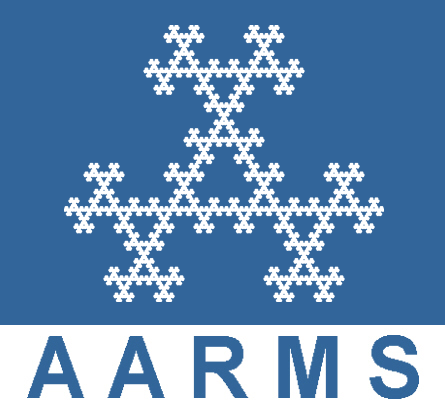Réunion d'hiver SMC 2016
Niagara Falls, 2 - 5 décembre 2016
Org: Ben Bolker, Jonathan Dushoff et David Earn (McMaster University)
[PDF]
- BEN BOLKER, McMaster University
Stochastic mutation-selection-drift models of parasite virulence evolution [PDF]
-
Mathematical models of parasite evolution most often use a
deterministic framework, where the only role of stochasticity is to
provide raw material for adaptation via mutation. In an attempt to
consider the diversity of parasite virulence from a broad perspective,
and in particular to understand the broad range of virulence and the
large number of low-virulence parasites found in natural communities,
we explore a range of stochastic, discrete-population models. Our
models incorporate mutation, drift, and selection; each distinct
parasite strain differs in transmission, host clearance
rate/virulence, or both. In the absence of a virulence-transmission
tradeoff, we find as expected that parasites are strongly selected for
increased transmission and decreased virulence, limited only by the
effects of mutation and drift; smaller host populations have
lower-transmission/lower-virulence parasites. We also observe a
bimodal distribution of outcomes depending on the mean and standard
deviation of the mutational spectrum.
- ALMAZ BUTAEV, Concordia University
On the Skellam model with time delay and non-zero drift [PDF]
-
In this talk we consider the following initial value problem
$$
\left\{ \begin{array}{ll}
(\partial_t -\Delta_x + w\cdot \nabla_x + \alpha I) u(t,x) = \beta u (t-\tau,x), & t\in \mathbb{R}_+,\ x\in \mathbb{R}^n \ u(t,x)=\phi(t,x)\in C([-\tau,0];L^1(\mathbb{R}^n)), & t\in [-\tau,0], x \in \mathbb{R}^n.
\end{array} \right.
$$
The question we are interested in is the following. Under which conditions on parameters $\tau,w,\alpha,\beta$, is the trivial solution $u=0$ stable?
In the context of population dynamics, this initial value problem can be viewed as a model of a population undergoing Malthusian growth and spreading by a random diffusion with the drift $w$ . The growth is characterized by a death rate $\alpha$, birth rate $\beta$ and a gestation/maturation period $\tau$. The problem is: given coefficients $\alpha,\beta,w,\tau$ determine if the population invade the habitat or goes extinct.
In the drift-free case, a complete solution was given by Travis and Webb. We will show that in some cases the relation between $\alpha$ and $\beta$ plays the dominant role in the extinction of the population. However, in the opposite cases, the drift can help the population to survive.
- DAVID J.D. EARN, McMaster University
Growth of plagues of long ago [PDF]
-
A variety of historical records reveal the temporal patterns of a sequence of plague epidemics in
London, England, in the 14th and 17th centuries. We estimate and compare the initial rates of
growth of these outbreaks and consider the implications for ecology and evolution of Yersinia
pestis.
- PHILIP GREENSPOON, University of Toronto
Parasite transmission among relatives halts Red Queen dynamics [PDF]
-
The theory that coevolving hosts and parasites create a fluctuating selective environment for one another (i.e., produce Red Queen dynamics) has deep roots in evolutionary biology; yet, empirical evidence for Red Queen dynamics remains scarce. Fluctuating coevolutionary dynamics underpin the Red Queen Hypothesis for the evolution of sex, as well as hypotheses explaining the persistence of genetic variation under sexual selection, local parasite adaptation, the evolution of mutation rate and the evolution of non-random mating. Coevolutionary models that exhibit Red Queen dynamics typically assume that hosts and parasites encounter one another randomly. However, if related individuals aggregate into family groups or are clustered spatially, related hosts will be more likely to encounter parasites transmitted by genetically similar individuals. Using a model that incorporates familial parasite transmission, we show that a slight degree of familial parasite transmission is sufficient to halt coevolutionary fluctuations. Our results predict that evidence for Red Queen dynamics, and its evolutionary consequences, are most likely to be found in biological systems in which hosts and parasites mix mainly at random, and are less likely to be found in systems with familial aggregation. This presents a challenge to the Red Queen Hypothesis and other hypotheses that depend on coevolutionary cycling.
- KARSTEN HEMPEL, McMaster University
Estimating epidemic coupling between populations from invasion times [PDF]
-
Understanding the mechanisms by which diseases are transmitted between human populations is critical in any efforts to understand and predict widely-spread epidemics and pandemics. Modeling and parameterizing transmission between populations is a difficult problem, however, since the process of transmission is largely unobservable, and information about transmission between populations is usually obscured by local dynamics. We present a method for estimating coupling between two populations modeled as susceptible-infected-recovered (SIR) systems, where an epidemic begins with a single infection in one population and later spreads to the second population. We show that the strength of coupling between the two populations can be estimated from the time taken for the disease to invade the second population. Confidence in the estimate is low when observing only a single invasion event, but is increased if numerous independent invasion events can be observed. The method we present considers a simple scenario, but is valuable progress in developing and verifying methods for estimating epidemic coupling between populations in an ever more connected global human population.
- TING-HAO HSU, Department of Mathematics and Statistics, McMaster University
Bifurcation delay and the entry-exit relation [PDF]
-
In planar systems of the form $\dot{x}=\epsilon f(x,z,\epsilon)$, $\dot{z}=g(x,z,\epsilon)z$, where $f(x,0,0)>0$ and $x g(x,0,0)<0$ for $x\ne 0$, the phenomenon of "bifurcation delay" is that the limiting attracting and repulsion points are given by the so-called entry-exit function. This phenomenon has been observed in certain classes of predator-prey models, including the systems that have two predators competing exploitatively for the same prey in constant environment, and a diffusive version of Holling-Tanner predator-prey model. Using the Exchange Lemma in Geometric Singular Perturbation Theory, I will show a new and transparent proof of the bifurcation delay.
- CHIU-JU LIN, Department of Mathematics and Statistics, McMaster University
Modeling the trade-off between transmissibility and contact in infectious disease dynamics [PDF]
-
Symptom severity affects disease transmission both by
impacting contact rates, as well as by influencing the probability
of transmission given contact. This involves a trade-off between
these two factors, as increased symptom severity will tend to
decrease contact rates, but increase the probability of transmission
given contact (as pathogen shedding rates increase with symptom
severity). This talk explores this trade-off between contact and
transmission given contact, using a simple compartmental
susceptible- infected-recovered type model. Under mild assumptions
on how contact and transmission probability vary with symptom
severity, we give sufficient, biologically intuitive criteria for
when the basic reproduction number varies non-monotonically with
symptom severity. Multiple critical points are possible. We give a
complete characterization of the region in parameter space where
multiple critical points are located in the special case where
contact rate decreases exponentially with symptom severity. We
consider a multi-strain version of the model with complete
cross-immunity and no super-infection. In this model, we prove that
the strain with highest basic reproduction number drives the other
strains to extinction. This has both evolutionary and
epidemiological implications, including the possibility of an
intervention paradoxically resulting in increased infection
prevalence. (jointly with K. A Deger and J. H. Tien)
- XIAOYING WANG, University of Ottawa
Pattern formation of a predator-prey model with the cost of anti-predator behaviors [PDF]
-
We propose and analyse a reaction-diffusion-advection predator-prey model in which we assume that predators move randomly but prey avoid predation by perceiving an repulsion along predator density gradient. Based on recent experimental evidence that anti-predator behaviors alone lead to a $40\%$ reduction on prey reproduction rate, we also incorporate the cost of anti-predator responses into the local reaction terms in the model. Sufficient and necessary conditions of spatial pattern formation are obtained for various functional responses between prey and predators. By mathematical and numerical analyses, we find that small prey sensitivity to predation risk may lead to pattern formation if the Holling type II functional response or the Beddington-DeAngelis functional response is adopted while large cost of anti-predator behaviors homogenises the system by excluding pattern formation. However, the ratio-dependent functional response gives an opposite result where large predator-taxis may lead to pattern formation but small cost of anti-predator behaviors inhibits the emergence of spatial heterogeneous solutions.
- GAIL WOLKOWICZ, McMaster University
Analysis of a simplified model of anaerobic digestion [PDF]
-
Anaerobic digestion is a complex naturally occurring process used for waste and wastewater treatment to produce bio-gas as a renewable source of energy. The so-called Anaerobic Digestion Model No. 1 (ADM1) includes 32 state variables and is not mathematically tractable. We analyze a simplified model proposed by Bornh\:{o}ft, Hanke-Rauschenback, and Sundmacher, that seems to capture the qualitative dynamics of the ADM1 model, including the possibility of bi-stability and the bifurcation dynamics when substrate concentration is used as the bifurcation parameter. Our analysis applies to a general class of response functions. We then consider the effects of stochastic perturbations of the model using several different numerical schemes having different interpretations in an attempt to understand how to recognize and prevent imminent failure of the reactor. This is joint work with Tyler Meadows and Marion Weedermann.





